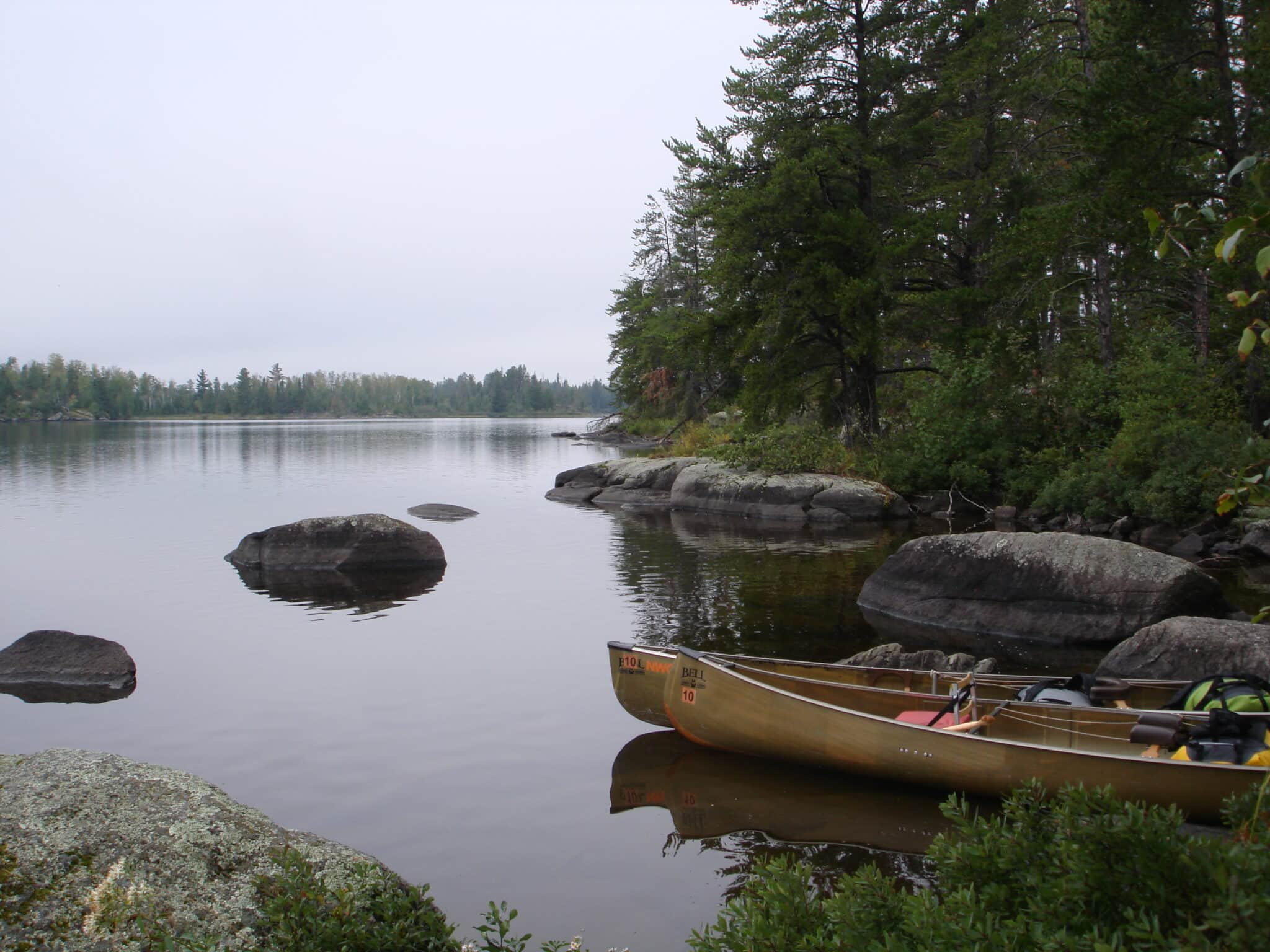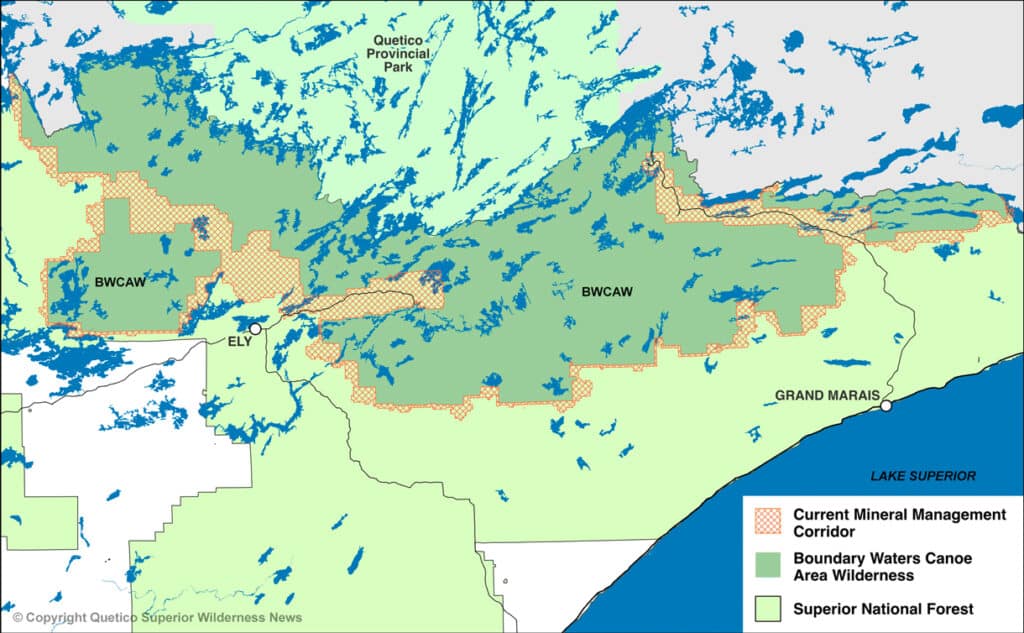
The Minnesota Department of Natural Resources has decided that its existing rules are insufficient to ensure the Boundary Waters Canoe Area Wilderness is not negatively affected by potential mines nearby. In a court filing this week, the agency said it has determined the best approach may be to expand a corridor around the wilderness where mining is not allowed.
The DNR says regulatory protections for water are already strong enough that expanding the buffer based on those concerns is unnecessary, but noise and light pollution from mines could degrade the Boundary Waters without changes.
“DNR has determined that its mine siting rule is not adequate to protect natural resources from pollution, impairment, or destruction relating to noise and light,” the agency wrote in a legal filing. “DNR has decided to undertake rulemaking to expand the size of the Mineral Management Corridor in which no surface disturbance is permitted to address potential noise and light impacts.”
The decision came as the result of a lawsuit filed in 2020 by the Campaign to Save the Boundary Waters. The organization says the existing rules, passed in the early 1990s, are outdated and inadequate. A judge instructed the DNR to determine if the rules fully protected the Boundary Waters.
Intense interest
A public comment period in 2021 that was part of the determination process generated more than 8,000 comments. The organization celebrated the recent DNR decision.
“It’s encouraging that the Minnesota Department of Natural Resources recognizes that the existing rules, promulgated 30 years ago, are no longer adequate to protect the Boundary Waters,” said Ingrid Lyons, Executive Director of the Campaign to Save the Boundary Waters. “We will work through the process to ensure that subsequent proceedings properly address all of the priceless natural resources at risk from pollution, impairment, and destruction if sulfide-ore copper mining were allowed in the Boundary Waters watershed.”
Mining supporters also saw cause for optimism in the DNR’s decision. An industry group that advocates for allowing copper-nickel mines said the announcement was good news.
“It’s great to see that the DNR did not ban mining, and that they’ve taken the position that the existing rules are adequate to protect air and water quality standards in the BWCA,” Jobs for Minnesota chair Dave Chura told MPR News.
The Mineral Management Corridor that surrounds the Boundary Waters already prohibits mining in areas near the wilderness, like the Gunflint Trail, Fernberg Road, and Echo Trail, as well as a slim buffer around the entire border of the wilderness.

Layers of protections
While the lawsuit and decisions all deal with state laws regarding where copper-nickel mines can be located, it may be redundant for the time being. In recent months, the Biden administration has blocked any such mines on federal lands upstream of the Boundary Waters for 20 years. But the expanded Mineral Management Corridor would be permanent and serve as an additional layer of protection if the 20-year moratorium is overturned or when it expires.
Some parts of the Mineral Management Corridor are also outside the Rainy River watershed, which is where the federal ban applies. The areas outside are not currently targeted for mining, but the corridor could be expanded for additional protection in the future.
The DNR says that it believes state laws to protect lakes and rivers are strong enough. All lakes and rivers in the Boundary Waters are already classified as Prohibited Outstanding Resource Value Waters, for which no measurable impact to water quality by mining is allowed.
That said, the agency also says many of the concerns it has heard about water pollution caused by mining should be taken up by the legislature. The House and Senate could consider new policies to deal with storage and disposal of mine waste and processing methods that increase pollution risks.
The rule-making process to expand the Mineral Management Corridor is expected to take up to two years. The court also allows any of the involved parties to request an administrative hearing over the DNR’s decision within 30 days.
More information:
- Agency Review of Nonferrous Mine Siting Rule – MN DNR
- DNR to rewrite mining rules to prevent noise and light pollution in Boundary Waters – MPR News

